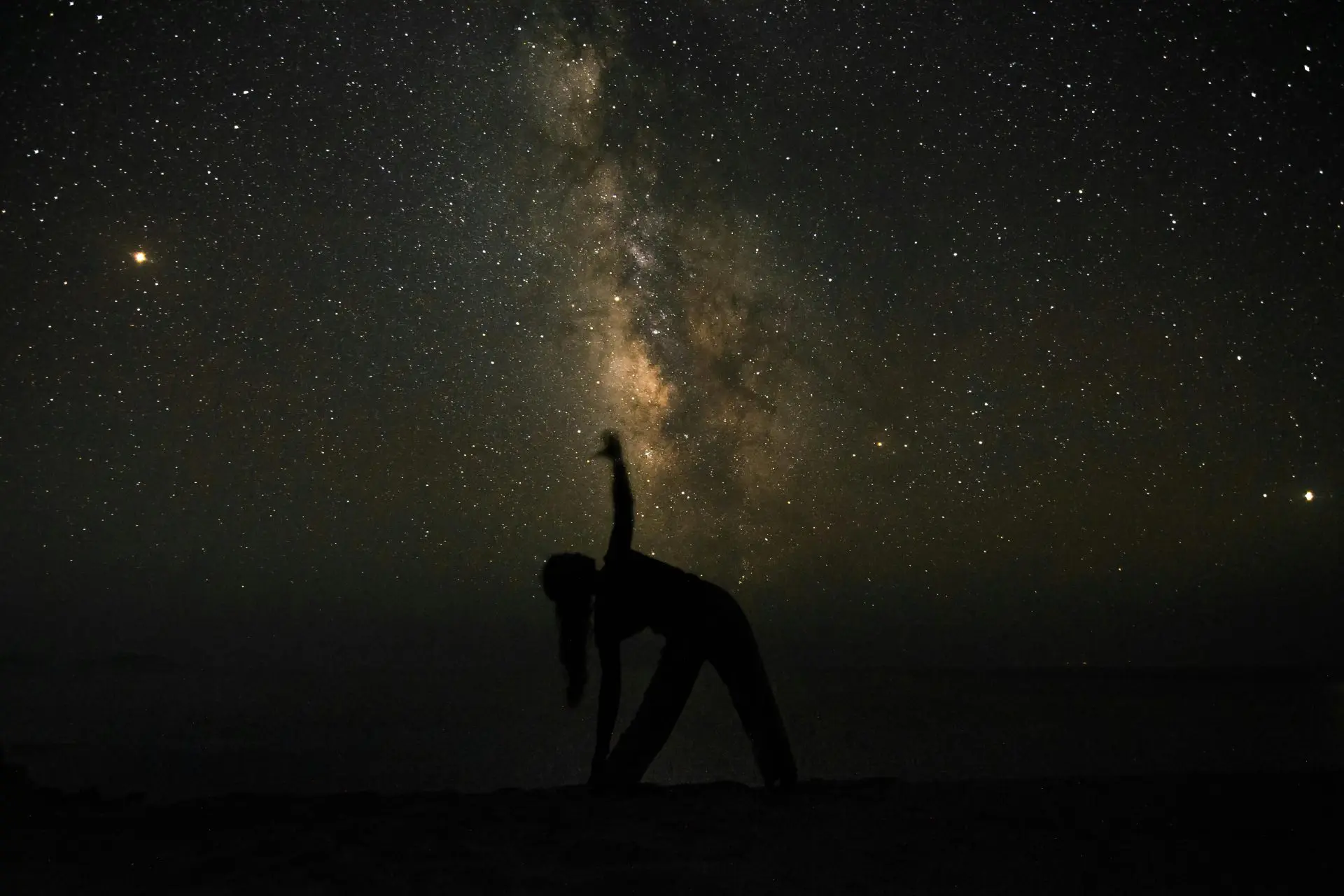Why Do Polar Bears Have White Fur?

Looking for more amazing products? Check out our online store and explore our collection here! Happy shopping!
Before diving in, please note: This post is for informational purposes only. If you’d like to know more about how we approach topics, feel free to check out our friendly Disclaimer Page.
Hey there, amazing readers! 
We’re committed to delivering quality posts, and your support (even just sticking around despite the ads) means everything to us. So, bear with us, and thanks for helping us keep the good vibes rolling. Now, on to the fun stuff!
TRANSLATE BUTTON AT THE END OF THE ARTICLE
A Quick Overview
Polar bears, those majestic creatures of the Arctic, are a sight to behold with their stunning white fur.
But why do they have this particular coloration?
Is it just for looks, or does it serve a more significant purpose?
In this article, we’ll explore the fascinating reasons behind the polar bear’s white fur, how it aids in their survival, and the broader implications for their habitat.
Let’s dive in and discover the magic of these magnificent animals!
The Fascinating World of Polar Bears’ Fur Color
Polar bears, or Ursus maritimus, sport a unique fur color that makes them easily recognizable.
At first glance, their fluffy coat may seem like pure white, but there’s more to it than meets the eye.
In reality, polar bear fur is transparent and hollow.
These hollow strands help trap heat from the sun, making their coat incredibly effective at insulation.
The primary function of this fur isn’t just aesthetic; it’s a critical adaptation to their icy habitat.
Imagine walking around in the freezing cold without a thick coat—polar bears don’t have that luxury.
They rely on their specialized fur to keep warm, which works hand-in-hand with their layer of fat beneath the skin.
In addition to insulation, their fur also plays a crucial role in camouflage.
A white coat allows them to blend seamlessly into their snowy environment, helping them remain unseen by both prey and potential threats.
This clever adaptation is a perfect example of nature’s ingenuity.
So, while we may admire their beauty, there’s a scientific story behind why polar bears wear their fluffy white coats.
It’s much more than just a fashion statement; it’s a lifeline in one of the harshest climates on Earth.
Polar Bear Adaptations: Nature’s Marvelous Designs
Adaptations are the way nature equips animals to thrive in their environments.
Polar bears are no exception.
Their fur color is just one of several remarkable traits that help them survive in the Arctic.
Thick Layer of Fat: Under their skin, polar bears have about 4 inches of fat that serves as insulation.
This blubber keeps them warm in icy waters and frigid temperatures.
Large Size: Their massive size helps them conserve heat.
Bigger animals lose heat slower than smaller ones, making polar bears ideally suited for cold regions.
Paw Size: Their large paws act like snowshoes, distributing their weight and preventing them from sinking into the snow.
Sharp Claws: Polar bears have long, sharp claws that help them grip the ice and catch seals, their primary food source.
Strong Sense of Smell: They can detect seals nearly a mile away and under several feet of compacted snow.
Talk about an impressive nose!
These adaptations showcase how polar bears have evolved to dominate their Arctic habitat.
Their white fur is just one piece of a larger puzzle that allows them to thrive in one of Earth’s most extreme environments.
Discover "Dog Care: Learning How to Care for Your Furry Friend
"
How White Fur Helps in Arctic Survival
Survival in the Arctic is no easy feat.
The environment is harsh, with extreme cold, biting winds, and limited food sources.
The white fur of polar bears is a critical factor in overcoming these challenges.
Polar bears primarily hunt seals, which are also white or gray, depending on the season.
The bears can’t just waltz up to their prey.
They need to be stealthy and camouflaged to avoid being spotted.
The white fur allows them to blend into the snowy landscape, making it easier to sneak up on their dinner.
Moreover, the color of their fur reflects sunlight, which helps prevent overheating during the brief Arctic summer.
While polar bears are well-adapted to cold, they can still experience heat stress if temperatures rise too high, especially with their thick layers of insulation.
Additionally, the white fur serves another crucial purpose.
It absorbs sunlight during the long months of winter.
This absorption helps maintain their body temperature, which is vital when the mercury dips to frightening lows.
In essence, the white fur of polar bears isn’t just for show; it’s a key player in their survival strategy in the Arctic wilderness.
The Science Behind Polar Bear Fur Pigmentation
So, how does polar bear fur achieve its striking coloration?
It all boils down to pigmentation—or the lack thereof.
Unlike many animals, polar bears don’t have pigments that produce color in their fur.
Instead, their fur is made up of transparent, hollow strands.
These hollow hairs reflect and scatter light.
When sunlight hits them, they appear white.
This optical trickery makes them look like they are coated in snow.
The fur acts like a prism, effectively camouflaging the bears against their snowy backdrop.
Interestingly, this adaptation allows polar bears to appear different in various lighting conditions.
Under cloudy skies, they may look more gray, while in bright sunlight, they can seem almost dazzlingly white.
This ability to blend into their surroundings can be an essential element in hunting and avoiding detection by rivals.
This fascinating interplay of light and fur not only makes polar bears visually stunning but also significantly enhances their ability to survive in a challenging environment.
Camouflage: Blending In with Arctic Landscapes
Imagine trying to sneak up on a meal in a vast, white expanse.
Camouflage is vital for polar bears, allowing them to remain inconspicuous in their surroundings.
Their white fur serves as a cloak of invisibility against the stark Arctic landscape.
During the winter, when the ground is covered in snow, the bears’ fur makes them nearly undetectable.
This is particularly important when hunting seals, who are naturally wary.
A polar bear can lie motionless for hours, blending into the snow, waiting for the perfect moment to strike.
In summer, the ice melts, and their surroundings become a patchwork of colors, including blues and greens.
Surprisingly, polar bears can adapt to these changes, using their surroundings to maintain their camouflage.
They may position themselves on rocky outcrops or among the sparse vegetation, using their fur to blend in.
Camouflage isn’t just about hunting, either.
It’s also crucial for staying safe from other predators.
Polar bears may face threats from other bears or human activities.
Their ability to blend into the Arctic environment gives them a slight edge in avoiding confrontation.
Ultimately, the art of camouflage is a survival skill for polar bears.
Their white fur transforms them into masters of disguise, perfectly suited for their icy habitat.
Insulation: Keeping Warm in Frigid Temperatures
In the Arctic, staying warm is the name of the game.
Polar bears face extreme cold, with temperatures plunging far below freezing.
Their white fur plays an essential role in insulation, helping them to maintain body heat.
The long, hollow hairs trap air close to the skin, creating a layer of warmth.
This insulation layer is further enhanced by the thick layer of fat beneath the fur.
This dual defense against the cold is crucial for their survival.
Polar bears can endure temperatures as low as -50°F, making them one of the best-adapted mammals for such frigid conditions.
Their fur and fat work in concert, allowing them to remain active and hunt effectively, even in severe weather.
During mating season or while caring for cubs, polar bears may spend a significant amount of time in dens.
Here, the insulation of their fur is vital, as it helps retain warmth in an environment that can be deadly if exposed for long.
These adaptations make polar bears fascinating examples of survival strategies in extreme environments.
Their white fur is not just a pretty coat; it’s a critical component of their ability to thrive in the Arctic.
The Role of Light Reflection in Polar Bear Fur
The relationship between light and polar bear fur is a captivating aspect of their anatomy.
The hollow hairs don’t just trap heat; they also reflect light, creating the stunning white appearance we associate with these magnificent creatures.
This light reflection serves several purposes.
First and foremost, it aids in camouflage by allowing polar bears to blend into their snowy surroundings.
When light hits their fur, it scatters, making it difficult for both prey and predators to spot them.
Additionally, this reflective quality helps regulate body temperature.
During the Arctic summer, polar bears can experience high temperatures, especially when basking in the sun on the ice.
The reflection of light off their fur helps them avoid overheating, allowing them to thrive even in warmer conditions.
This balance of light absorption and reflection is a perfect example of nature’s clever designs.
Polar bears are not just surviving; they are thriving in a landscape where conditions can change in an instant.
Why Not Brown or Black? A Colorful Question
You might wonder, why did polar bears evolve to have white fur rather than brown or black?
It all relates to their environment.
Brown or black fur might be beneficial in forests or mountainous regions, but the Arctic presents a different story.
The primary reason for their white coloration is to blend into their icy surroundings.
In a world dominated by whites and blues, being brown or black would stick out like a sore thumb.
Predators and prey alike would quickly spot a polar bear with darker fur, making survival much harder.
Moreover, while darker fur absorbs heat from sunlight, polar bears have a unique adaptation to combat cold—hollow, white fur.
This helps them regulate body temperature while offering camouflage and insulation.
Interestingly, other bear species do wear darker coats.
Grizzly bears and black bears have adapted their colors based on their habitats.
In the case of polar bears, evolution has favored white fur as the best option for life in the Arctic.
The evolutionary path of polar bears reflects the deep connection between an animal and its environment.
In their case, white fur provides the ultimate survival advantage.
Evolutionary Benefits of White Fur for Polar Bears
The journey of polar bears through the annals of evolution is a testament to natural selection at work.
Their white fur has conferred several evolutionary benefits that have allowed them to dominate the Arctic ecosystem.
Survival in Hunting: The ability to camouflage against the snow enhances their hunting success, crucial for a carnivorous lifestyle.
Their diet primarily consists of seals, so blending into the landscape is vital.
Thermal Regulation: The unique structure of their fur helps with thermal regulation, allowing them to maintain body temperature even when the thermometer dips to frightening lows.
Social Dynamics: A white coat also plays a role in social interactions.
Polar bears often observe each other from a distance.
The coloration helps maintain their space and avoid unnecessary confrontations with rivals.
Breeding Success: By successfully hunting and maintaining body heat, polar bears can produce healthy cubs, ensuring the continuation of their species.
White fur thus plays a role in reproductive success as well.
These benefits create a feedback loop where better survival leads to more successful reproduction, allowing the species to thrive in the Arctic landscape.
The Impact of Climate Change on Polar Bear Fur
Climate change poses a significant threat to polar bears and their iconic white fur.
As temperatures rise, sea ice melts at an alarming rate, altering the habitat that polar bears depend on for hunting and breeding.
With less ice, polar bears are forced to travel greater distances in search of food.
This increased energy expenditure can lead to weight loss and decreased reproductive success.
The very elements that make their white fur advantageous are threatened by changing environmental conditions.
Moreover, as the ice melts, the hunting grounds for seals diminish, leading to food scarcity.
Without access to their primary prey, polar bears may struggle to survive, and their population numbers could dwindle.
Interestingly, the fur itself may also be affected.
Warmer temperatures can lead to changes in fur quality.
If polar bears have less time in their icy habitats, the insulation properties of their fur could become less effective, leaving them vulnerable to the cold.
It’s clear that the impact of climate change on polar bears extends beyond their food sources.
The very characteristics that make them unique are at risk, highlighting the urgent need for action to protect these magnificent animals and their environment.
Fun Facts: More Than Just White Fur!
Polar bears are fascinating creatures with a wealth of interesting characteristics beyond their iconic fur.
Here are some fun tidbits that truly showcase their uniqueness:
Size Matters: Adult male polar bears can weigh between 900 to 1,600 pounds, making them the largest land carnivores.
Females are smaller, typically weighing 330 to 650 pounds.
Swimming Champions: Polar bears are excellent swimmers.
They can cover long distances in the water, sometimes swimming for days without rest.
Their fur and fat keep them buoyant and warm.
Lactose Intolerance: Surprisingly, adult polar bears are lactose intolerant, meaning they cannot digest milk.
However, cubs nurse from their mothers until they are about 2.5 years old.
Long Distance Travelers: Polar bears are known to roam vast distances.
They can travel up to 30 miles a day in search of food.
Family Life: Female polar bears are incredibly nurturing and protective mothers.
They usually give birth to twin cubs, caring for them in a den until they are ready to face the world.
These captivating facts only scratch the surface of what makes polar bears remarkable.
Their white fur is just one aspect of their incredible adaptations to life in the Arctic.
Protecting Polar Bears: A Call to Action for All
As we’ve explored throughout this article, polar bears and their iconic white fur are perfectly adapted to survive in the Arctic.
But they face unprecedented challenges due to climate change and habitat loss.
Protecting these magnificent creatures requires collective action from all of us.
Here are a few ways you can help:
Spread Awareness: Share information about polar bears and their plight with friends and family.
The more people know, the more they can help.
Reduce Carbon Footprint: By reducing your carbon emissions, you can contribute to efforts against climate change.
Simple actions like biking instead of driving or using energy-efficient appliances can make a difference.
Support Conservation Organizations: Numerous organizations focus on polar bear conservation efforts.
Donations can help protect their habitats and support research.
Advocate for Policies: Support policies that aim to combat climate change and promote sustainable practices.
Your voice matters, and advocating for change can lead to significant impacts.
Educate Others: Engage in conversations about the importance of wildlife conservation.
The more people who care about polar bears, the better chance they have of survival.
By taking action, we can help protect polar bears and ensure that future generations will admire their beauty and adaptations.
Conclusion
In summary, polar bears have white fur for a multitude of reasons that go far beyond mere aesthetics.
Their coloration serves to provide camouflage, insulation, and thermal regulation, making them perfectly suited for the harsh Arctic environment.
As we face the challenges of climate change, it’s important to recognize the significance of these magnificent creatures and advocate for their protection.
Polar bears are not just symbols of strength and resilience; they are essential components of the Arctic ecosystem.
Let’s work together to ensure that their beautiful white fur continues to grace the icy landscapes for generations to come.

The Enlightenment Journey is a remarkable collection of writings authored by a distinguished group of experts in the fields of spirituality, new age, and esoteric knowledge.
This anthology features a diverse assembly of well-experienced authors who bring their profound insights and credible perspectives to the forefront.
Each contributor possesses a wealth of knowledge and wisdom, making them authorities in their respective domains.
Together, they offer readers a transformative journey into the realms of spiritual growth, self-discovery, and esoteric enlightenment.
The Enlightenment Journey is a testament to the collective expertise of these luminaries, providing readers with a rich tapestry of ideas and information to illuminate their spiritual path.
Our Diverse Expertise
While our primary focus is on spirituality and esotericism, we are equally passionate about exploring a wide range of other topics and niches 

To ensure we provide the most accurate and valuable insights, we collaborate with trusted experts in their respective domains 
Our blog originally focused on spirituality and metaphysics, but we’ve since expanded to cover a wide range of niches. Don’t worry—we continue to publish a lot of articles on spirituality! Frequently visit our blog to explore our diverse content and stay tuned for more insightful reads.
Hey there, amazing reader! 
Check out our store here and take a peek at some of our featured products below! Thanks for being awesome!










